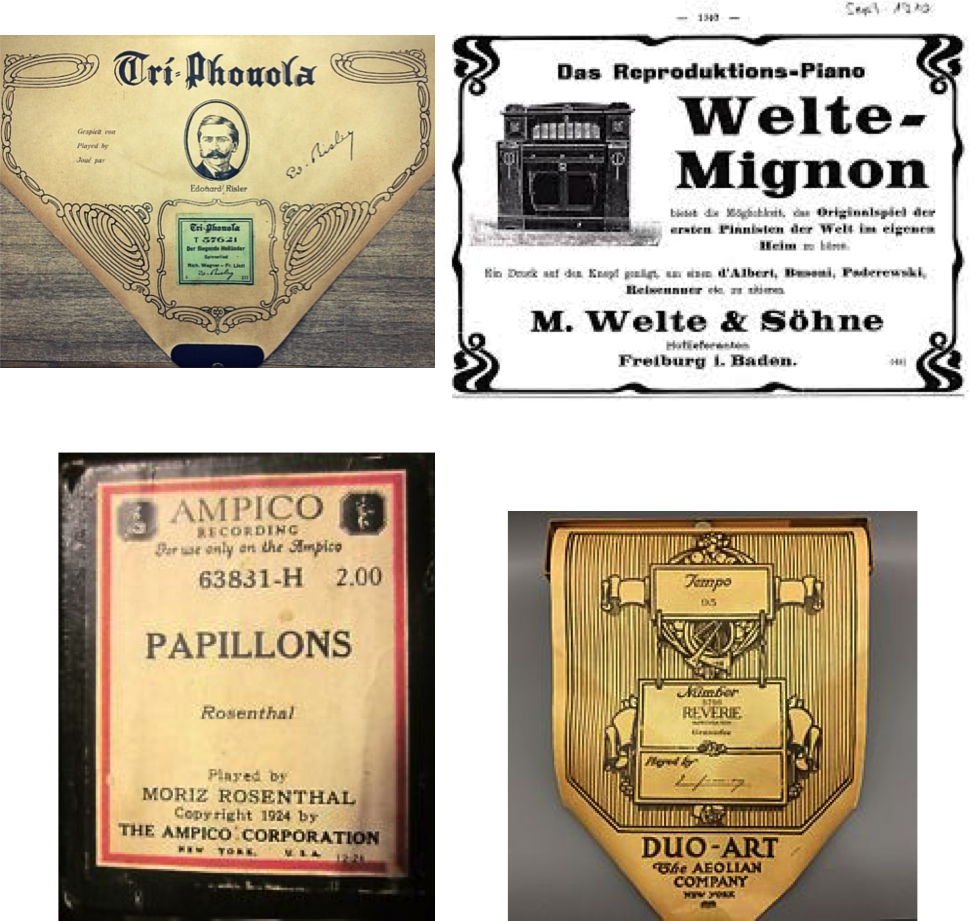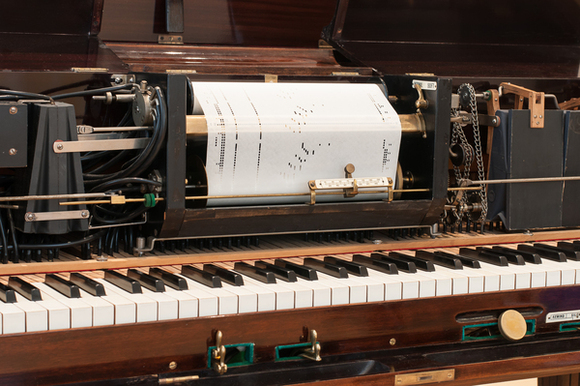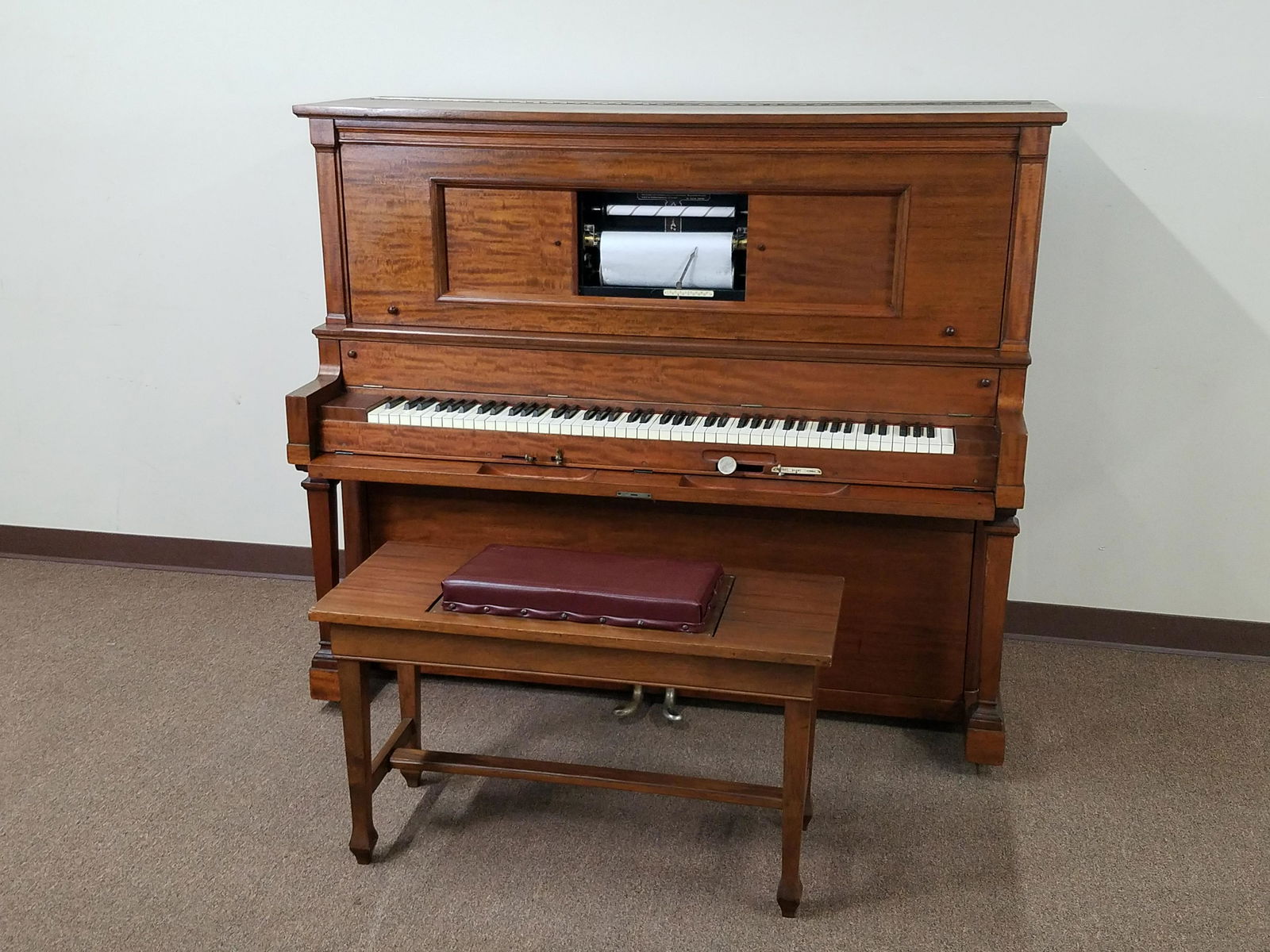

The production roll reproduced the real-time performance of the original recording when played back at a constant speed.

Hand played rolls are created by capturing in real time the hand-played performance of one or more pianists upon a piano connected to a recording machine. Metronomically arranged music rolls are deliberately left metronomic so as to enable a player-pianist to create their own musical performance (such as varying the dynamics, tempo, and phrasing) via the hand controls that are a feature of all player pianos. The music, when played back, is typically purely metronomical. Metronomic or arranged rolls are rolls produced by positioning the music slots without real-time input from a performing musician. Metronomic, hand played, and reproducing rolls This format became a loose world standard. Any pianos built to this standard could play rolls made to it, albeit sometimes with a loss of special functionality. This left margins at both ends for future developments. The group settled on a width of 11 + 1⁄ 4 inches (286 mm) and perforation standards for 65-note rolls (6 holes to the inch), and 88-note rolls (9 holes to the inch).

manufacturers of player pianos gathered in Buffalo, New York, to try to agree on some standards. On December 10, 1908, a group representing most of the largest U.S. In 1902, a German 72-note scale (F1, G1 to E7) was introduced. In 1900, an American format playing all 88 notes (A0 to C8) of the standard piano scale was introduced. The 65-note (with a playing range of A1 to C♯7) format was introduced in 1896 in the United States specifically for piano music. Most rolls use one of three musical scales. In the early years of player pianos, piano rolls were produced in varying dimensions and formats. The Musical Museum in Brentford, London, England houses one of the world's largest collections of piano rolls, with over 20,000 rolls as well as an extensive collection of instruments which may be seen and heard.įirst part of a piano roll for Welte-Mignon, about 1919, with lines for a pianolist, according to the Buffalo Convention Ī rollography is a listing of piano rolls, especially made by a single performer, analogous to a discography. The first paper rolls were used commercially by Welte & Sons in their orchestrions beginning in 1883.
#Aeolian player piano roll software#
MIDI editing software often features the ability to represent the music graphically as a piano roll. MIDI files have generally supplanted piano rolls in storing and playing back performance data, accomplishing digitally and electronically what piano rolls do mechanically. Piano rolls have been in continuous production since at least 1896, and are still being manufactured today QRS Music offers 45,000 titles with "new titles being added on a regular basis", although they are no longer mass-produced. The roll moves over a reading system known as a tracker bar the playing cycle for each musical note is triggered when a perforation crosses the bar.

These perforations represent note control data. Piano rolls, like other music rolls, are continuous rolls of paper with holes punched into them. A piano roll is a music storage medium used to operate a player piano, piano player or reproducing piano.


 0 kommentar(er)
0 kommentar(er)
